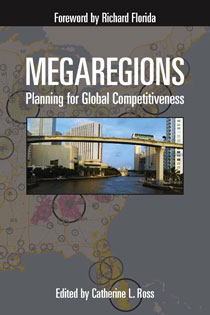"This book deftly navigates through the largely uncharted waters of megaregions in 21st century America. With contributions from some of the best minds in the field, it challenges us to pursue public infrastructure investments that increase global competitiveness, redress spatial inequalities that occur when trade-sheds expand, and forge new forms of governance that protect natural habitats and resources across multistate regions."
Robert Cervero, Professor of city and regional planning, University of California, Berkeley
"As the contributors to this timely and valuable book make clear, America's continued strength in the global economy is dependent on our ability to rethink the spatial and functional infrastructure that links our communities into larger networks—megaregions. Together, the chapters in this book elucidate this complex and essential underlying force in our lives, and offer guidelines for going forward."
William W. Millar, American Public Transportation Association
"What are megaregions good for? As this book amply demonstrates, the megaregion construct of linked metropolitan areas set within their environmental context has provoked new thinking about urban planning, infrastructure, economic development, ecology, and social equity. In short, megaregions are helping us to organize responses to the challenges of the 21st century at an effective scale."
Armando Carbonell, Department of Planning and Urban Form, Lincoln Institute of Land Policy
"Ross's book investigates the origins of megaregions, and ways that transportation, economic development, social justice, and environmental and climate strategies must be formulated at this new scale. This book is essential reading for policy makers, planners and others interested in learning about these places that are now home to nearly three out of four Americans."
Robert D. Yaro, president, Regional Plan Association

